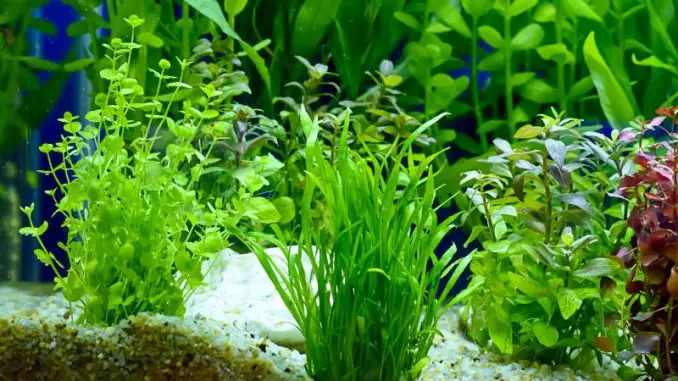
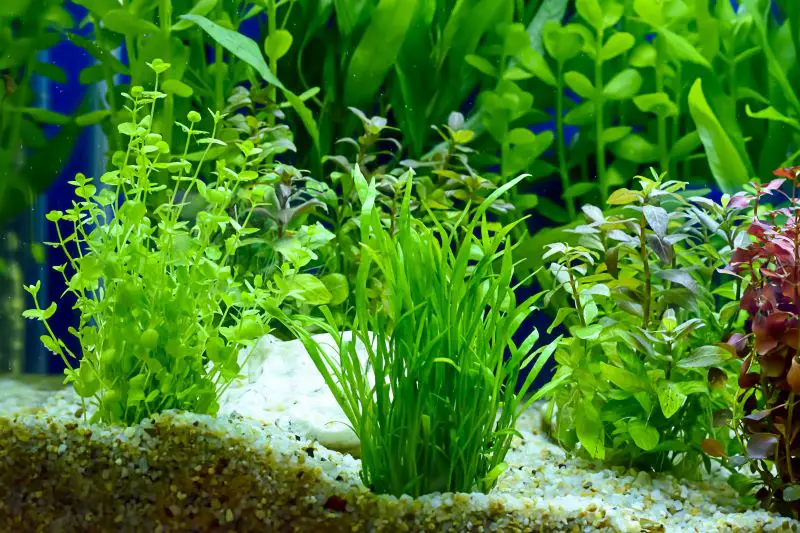
Betta fish, or Siamese Fighting Fish, are some of the most beloved fish for tropical aquariums. Whether they are your first fish, or you have lots of experience under your belt, everyone will enjoy this species.
They are beautiful fish. Their colors can be captivating, and they come in many forms with distinctive features. Plus, they have many infamous behaviors to keep your tank interesting.
To successfully care for Bettas, you must design an aquarium to suit them. This means considering the right water conditions, tank mates, and decorations, such as plants.
Plants make an important feature for your Betta tank. They provide territory, clean the water, release oxygen, and can look very pleasing.
There are many types of plants for you to select. You need to pick the ones that fit your setup the best.
In no particular order, we will list some of the most popular plants to keep alongside your Bettas. We hope this will help you to design the perfect Betta tank.
TABLE OF CONTENTS
Water Wisteria
Water wisteria, also known as Hydrophila difformis, is a freshwater plant native to the Indian subcontinent, in areas such as Nepal and Bhutan.
Its leaves are a vibrant green and come in many different forms. They will easily brighten up your tank.
A single stem can reach up to 20 inches. This means that it can reach the surfaces of the water, so be careful that it doesn’t block too much light.
This species is a great option for beginners because it is very hardy. It is quite capable of surviving through many common mistakes made when people try fishkeeping for the first time.
It is suitable for small tanks (10 gallons), but will require more maintenance. It is a fast-growing species, so it needs trimming regularly.
You can use the trimmings to propagate it. Simply plant them elsewhere in the tank. Each cutting will need leaves, to ensure that it can photosynthesize and grow.
The plant can be used in different ways. It is usually planted in the substrate where it will grow upright towards the surface, but you can also spread it across the substrate as a carpet.
Depending on how you use it, you will be providing a habitat for different types of fish. Bettas will prefer their shelter to be in the middle levels of the aquarium. Don’t plant it too densely so they still have open swimming spaces.
Duckweed
Duckweeds (Lemnoideae) are flowering plants that float on the surface of the water. They are naturally found above slow-moving bodies of water, giving a swampy appearance.
There are no stems or leaves, instead there are “fronds” that are usually filled with air to help them float. There may or not be roots, depending on the species.
Since it floats on the surface, it is a great option for creating shaded areas. Your Bettas will often seek these spaces of dimmer lighting when they are stressed.
Another advantage is Duckweed’s ability to take in nutrients. It grows very quickly, taking in lots of nutrients. This will keep your aquarium a little bit healthier.
However, Duckweed can cause a few problems too. It grows easily in a wide range of conditions. Once established in your tank, if left unchecked it can get out of control very quickly spreading across the surface and blocking out light to the plants and fish below.
Be sure that you are prepared for taking care of Duckweed. Once it is in your aquarium, it can be very difficult to remove it again. A single plant will multiply in a matter of days. Regular tending is needed to keep a proper equilibrium.
Amazon Frogbit
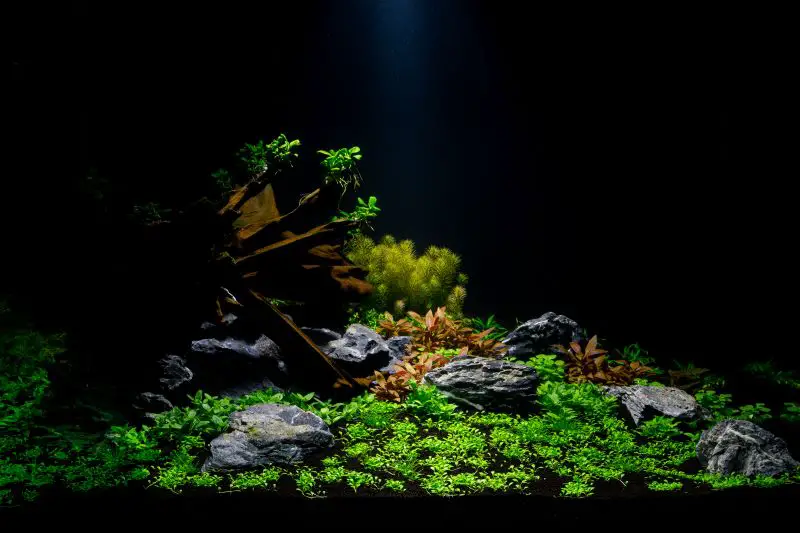
An excellent alternative to Duckweed. Amazon Frogbit (Limnobium laevigatum) creates the same canopy on the surface, but it is much easier to control and maintain.
It has large, round leaves (like lily pads) that group together to form a layer and block out light from below. There is much less risk of it growing quickly and completely taking over the top of the tank.
This is important because Bettas need plenty of access to the surface for a range of reasons, such as feeding, mating, and sometimes breathing (using their labyrinth organ).
Amazon Frogbit comes from South America. This is far away from natural populations of Asian Bettas, but they will still enjoy the security that this plant provides.
Another similarity to Duckweed is that this species consumes lots of nutrients, helping to clean the water in your aquarium. This will keep algae levels down too, which is very useful.
You can add this plant to most Betta tank setups. It can tolerate the most common aquarium water conditions. It can also tolerate most tank mates.
One exception is snails. These like to eat the underside of Amazon Frogbit. Either don’t add snails to the aquarium, or place the plant in the center of the surface, so that the snails cannot get to it.
Java Fern
Also known as Microsorum pteropus, Java fern is a very common aquarium plant. It is native to Southeast Asia, where it attaches to rocks and other surfaces in freshwater systems.
Its popularity likely comes from its care level. It is very easy to look after because it can tolerate many different conditions. It is also resistant to sudden changes in their environment, if something goes wrong in your setup.
This species grows slowly so maintenance is simple. It doesn’t require regular trimming and will generally care for itself.
Its appearance draws people to it as well. The leaves are a powerful green. Brighter lighting tends to cause the leaves to be slightly darker. Most leaves are spiky, but they can be bushy too.
It is anchored to the substrate or other surfaces by rhizomes, which are hair-like strings. If you want to propagate the plant, you can cut a rhizome in half and plant them separately.
Bettas enjoy using Java Fern as shelter and may claim it as a territory. It offers an escape from boisterous fish and high light levels when they are stressed.
This plant is a good choice if you are also keeping fish that are known to damage plants. The leaves are thick and robust, so most fish leave them alone.
Anubias Nana
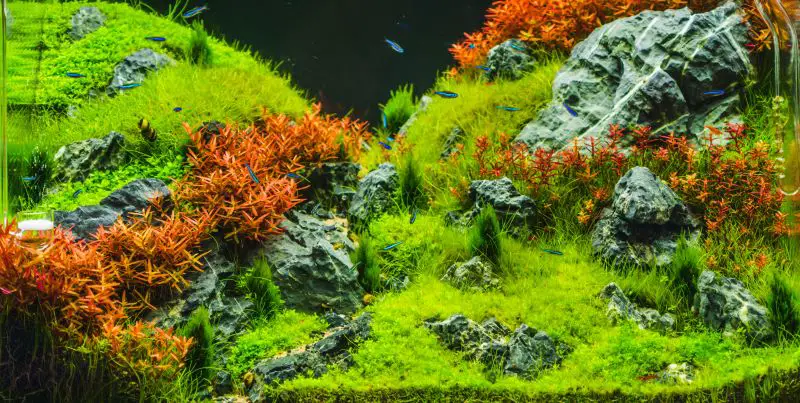
Anubias nana is one variety of the species Anubias barteri, a freshwater plant from African riverbanks. It can grow either partially or fully submerged, which makes it very versatile for a paludarium.
It is quite a short plant, reaching a maximum of just 7.5 inches. This is sufficient for a Betta though, who will hide amongst the leaves and return there regularly.
Since it is so small, it can be added to Betta tanks as small as 10 gallons.
The popularity of this plant is due to similar reasons as most of the other plants. It is a hardy species that won’t require much of your attention. Give it access to light and it will look after itself.
This is useful for everyone because you want your attention to be on your fish, but it is particularly useful for beginners who are not feeling competent yet.
Anubias Nana has a very thick stem that secures everything together. The classic teardrop-shaped leaves branch off to create cover. These leaves are strengthened by a waxy cuticle.
If you want to turn a small amount of Anubias Nana into a lot, you can easily propagate it via rhizome division. This is as simple as taking a cutting that has leaves attached and planting it separately.
This species may be at risk to fish that are notorious for nibbling plants, such as Goldfish. Generally, they should be fine with most small fish and other complementary plants.
Java Moss
Java moss is an Asian plant in the Hypnaceae family. Here it commonly grows on rocks and tree trunks along riverbanks.
This is yet another hardy species that isn’t very fussy about the water conditions or lighting levels that you keep it in. It’s easy to add, grow, and maintain.
It attaches to surfaces using rhizoids and produces lots of very short leaves (about 2mm). This has made it popular for aquascaping because it forms a beautiful carpet at the bottom of your tank.
It can grow on the wall of your tank too, since it attaches to surfaces so well. Attaching it to driftwood will make a decoration resembling a tree.
You will need to use thread to initially tie the Java Moss in place. It will then attach itself naturally after about a month, you can then remove the thread.
You can use scissors to trim it into the shape you want. Otherwise, you can just leave it to its own devices, creating a wild look.
Bettas don’t spend much of their time at the bottom of the tank, so you could try adding Java Moss higher up. It is unlikely to be used as a territory because of its short length.
Hornwort
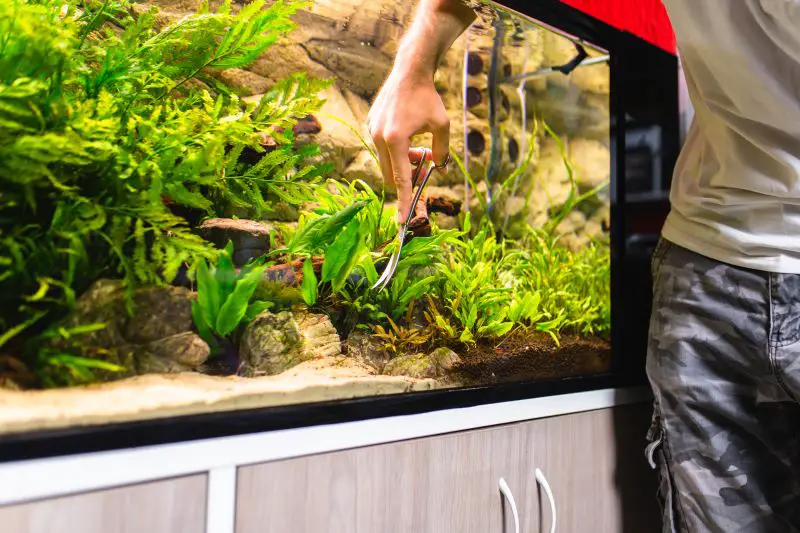
Hornwort, or Ceratophyllum, is one of the most successful aquarium plants. There are over 300 species that have incredible survivability, you can look at natural populations for proof.
It originated in South America and has now spread to every continent except Antarctica. Its success in the wild comes from a very fast growth rate, a high tolerance to changing water conditions, and the ease at which it propagates.
It is successful in captivity for the same reasons. Beginners can feel confident that this species will survive nearly any mistake they could make. The fast growth rate means that it recovers well from damage. You can keep it with fish species that are prone to nibbling plants.
Bettas enjoy hiding amongst Hornwort. It stretches from the substrate up into the water column. A single stem could reach 10 foot! The large size means it can be used in ponds.
One drawback to this is that the stems will need regular trimming. You can’t afford to leave it alone for long periods because it will quickly get out of control.
You can use the trimmings for propagation. If you want some more Hornwort in a different location, plant the trimmings and they will soon develop into a tall plant themselves.
Sometimes a stem may shed debris, but scavenging fish will probably eat this. You can remove it yourself if it remains in the tank for a while.
Amazon Swords
The name gives a lot away about this popular plant. Amazon swords (Echinodorus grisebachii/amazonicus) are native to South America, particularly the Amazon River basin.
The leaves are long and blade-like, reaching up to 14 inches. They extend from short stems to create a bushy appearance. A healthy plant will be a slightly dark green.
A dense patch of Amazon Swords makes an excellent refuge for Bettas. They will defend it as their territory, particularly when mating.
These plants can tolerate a wide range of temperatures, but the narrower range of 68-75°F will lead to the healthiest plants displaying the most vibrant colors.
Amazon Swords don’t need much of your attention. They do not need trimming, so if you maintain a healthy tank, the plants will take care of themselves.
Propagation is easy if you want to grow more. Plantlets grow from a long maternal stem. Once these develop their own roots and leaves you can cut them off and move them somewhere else to form a new plant.
The leaves may be at risk from herbivorous fish that might bite them. The damage would be evident for a long time, so be careful when choosing the tank mates for your Bettas.
Anacharis
Anacharis has a few different names, including Ancharis, Egeria densa (the current Latin name), and Elodea densa. Look out for all these names if you are trying to find the plant in stores.
In the wild it primarily grows in North and South America. It is native to South America, but it has now spread to many areas of the world.
The species has become popular with aquarists because of its ability to take in toxins and nutrients, which keeps the water cleaning and reduces algae growth.
These plants grow quickly, first heading up towards the light, then spreading across the surface. You will need to trim them regularly if you don’t want dense vegetation.
Bettas will enjoy using the dense areas as shelter and will defend it from other fish.
Anacharis is composed of a long stem with short leaves protruding all the way up. The shade of green will vary based on the conditions it lives in, but it is happy in most common aquarium conditions.
You have the choice of whether to plant it or float it. Just be sure not to block too much of the surface for your Bettas.
The soft leaves will attract certain snails and fish that enjoy treating plants as a snack, but the fast growth rate helps Anacharis to recover quickly.
Fake Plants
There is a broad selection of fake plants available in pet stores if you don’t feel that you are able to care for living options.
There are both pros and cons to fake plants. As you consider these to decide whether keeping fake plants is the way to go.
One advantage is that you get the freedom to pick any design that you want. They are made in all sorts of shapes, sizes, and colors. You can design your Betta tank in many ways that suit your taste.
The physical presence of fake plants still provides a territory for your Bettas, just like live plants would. They will not need trimming either, just cleaning occasionally.
The problem is that you lose many of the services that living plants would provide. This includes the ability to remove potentially harmful nutrients, and the release of oxygen into the water during photosynthesis.
An aquarium containing living plants tends to create a much healthier water environment, which helps your Bettas to thrive. If you can, it is recommended that you maintain live plants in your aquarium.
If you feel that fake plants are your best option, you want to look out for products made from silk. Fake plants are made from a variety of materials, but silk is the safest for a Betta’s skin.
Summary
There are lots of suitable plants available for Bettas, many more than what we have covered here, but this selection is a great place to start when deciding.
Most of the decisions will come down to what you think best suits your tank aesthetically, but there are a few other factors to consider.
Will it survive in your tank’s water conditions? Is it difficult to maintain? Can you propagate it? And what areas of the tank will it fill?
There is no correct choice, there are different plants for different people. No matter which species you pick, your Bettas will be very grateful to have them in their tank.
If you can’t pick between a few, maybe you should start a paludarium.

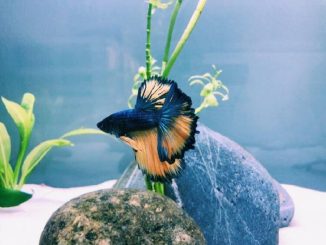
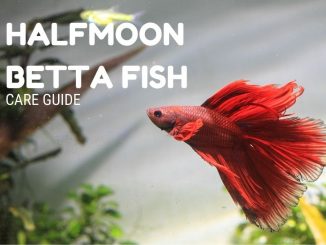
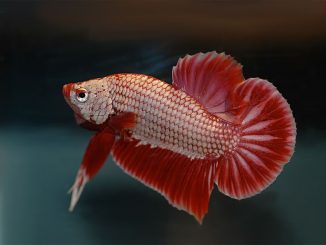
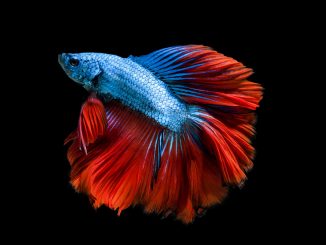
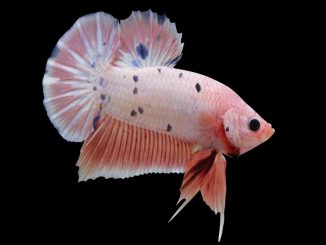
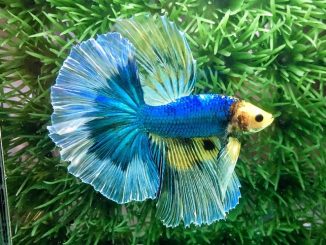
Be the first to comment